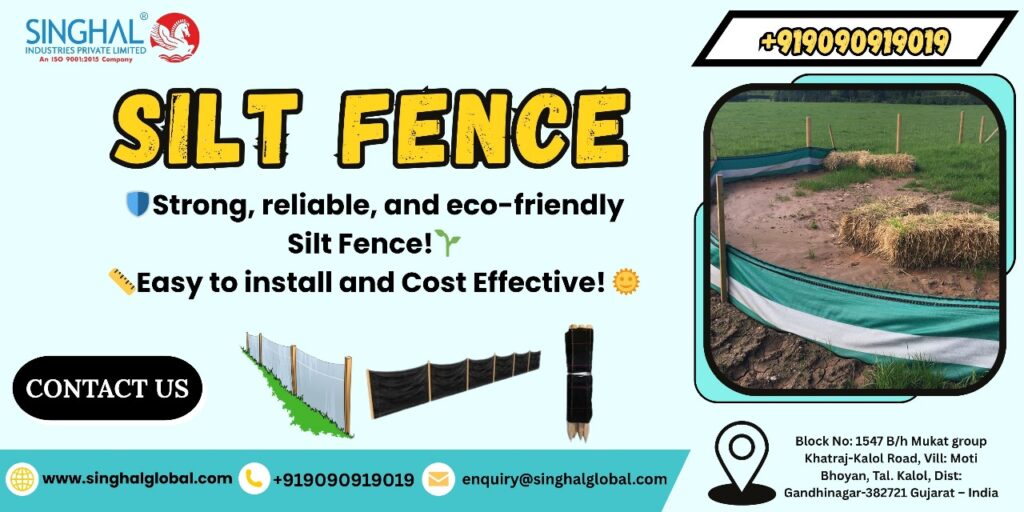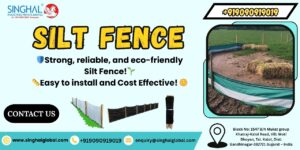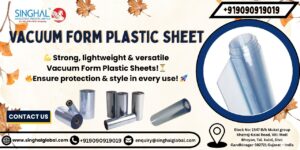The concept of eco-friendly erosion prevention isn’t just an idle buzzword, it’s quickly becoming the gold standard for the latest construction landscape, agriculture, and landscaping projects. The unnoticed hero of numerous successful stories of sediment control is the simple silt fence. But, with the multitude of options and technical aspects picking the right one may be overwhelming. Let’s break down the basics and delve into the complexities of silt fences, their real-world effects, the options available and the personal stories that explain their use.
What Is a Silt Fence, Anyway?
Silt fences are temporary sediment barriers that are typically constructed of woven polypropylene, or polyethylene fabric that is staked in the ground with a strong anchor. It is designed to allow the water flow in while absorbing soil and debris, keeping debris from contaminating nearby waters and other sensitive zones. Silt fences function as subtle guardians, quietly lifting heavy loads to ensure that communities and landscapes are secure.
Manufacture and Market: From India to the World
The industry of silt fences in India is thriving, blending modernization and tradition. Silt fence producers with a reputation for excellence such as Singhal Industries in Ahmedabad have made installation simpler, providing custom-designed fences that have the highest filtration rates and a long-lasting durability for agricultural, construction and residential areas. The manufacturing centers in Ahmedabad, Vadodara, and Surat are home to well-established companies that can meet the needs of a wide range of customers and ensure that the local projects are green with low-cost solutions.
There’s a growing competition among Silt fence manufacturers. Top exporters like Tech Weave and Singhal industries pvt ltd don’t just provide fences in the US, but also ship fences across the globe. This permits the silt fencing “made in India” to help protect the landscapes of Mumbai as well as Bengaluru.
Silt Fence Price: An Investment in Sustainability
Let’s face it, cost is important. Silt fence cost in India is dependent on the type of material, size, dimensions, UV protection, as well as the intended endurance. For instance, the price of standard PP silt fences that are woven is priced between Rs 100 and 800 per square meter. While budget-friendly options are appealing to small-scale projects, premium fences that have high-end UV stabilizers and durable high tensile strength are best suited to harsh conditions and compliance.
Strangely enough, discussions regarding the Silt fence price often overlook the bigger picture: choosing the right quality will save you the cost of repairs and replacements. An engineer from Chennai informed me that, “I thought I’d save by selecting the lowest-cost supplier. After our first monsoon, the majority of the fence was sagging… The more expensive fence wouldn’t have required three replacements!”
Where Silt Fences Save the Day
Think about the roads in Kolkata, India, where torrential rains regularly threaten to wash away soil onto busy roads. Local authorities put up silt fences manufactured by a prestigious Indian Silt fence manufacturer. We were amazed at how well sediment was kept even during cloudbursts. The environmental impact was severe—streams were clearer, and community complaints dwindled.
A farmer from Rajasthan explained how erosion used to take away a large part of his annual crop. “My neighbor’s field was always covered with mud after storms,” the farmer remarked, “while mine stayed intact when I put up that white silt fencing. Sometimes, simple solutions can make you happy. No more washing.”
The Human Side Insights
What’s the point of this issue in the first place? Personally, I think of silt fences like a pair of amiable fences that don’t get much attention as do landscapers and site engineers who have to face the elements. It’s funny how sometimes, silt fences get neglected or taken down too quickly, and when a park or a neighborhood floods, everyone wishes they had installed more.
I’ve seen people argue ferociously about their favorite brands or methods of installation on online forums. Some people swear by double stitching or even extra-thick posts, whereas others prefer lightweight fencing that is flexible and light. Sometimes, what works on one particular site won’t work in another location. Doesn’t construction have to be a blend of improvisation and science?
Key Technical Benefits
- Filtration: Fences made of silt remove the runoff of sediment and allows water to flow while keeping soil in place.
- Durability: Modern fences withstand UV rays and tears even in extreme weather and installation conditions.
- Customization: Sizes, printing choices, as well as stitching may be tailored to particular environmental or project requirements.
Environmental Contradictions: Silt Fences Are Not a Cure-All
There’s a twist: fences made of sand aren’t magical. Sometimes in the case of poor installation or carelessness, it can cause them to not function according to their intended purpose. A fence that is hanging or neglected will not hold dirt, and using the wrong type of fabric for the soil type or rainfall could lead to disappointments. Regular inspections and maintenance are equally important in the beginning as the investment.
Conclusion
The best fence to choose isn’t about specifications or price. It’s about trust, knowledge, and the heart behind the fence. Find out who is the top silt fence maker for your website? Perhaps try, as a lot of have done, with various types and find out what works. Is the cost of a silt fence worth it to keep your neighborhood safe and the water cleaner?
Last but not least, don’t be afraid to ask questions and try different alternatives. Sometimes, professionals debate the size of mesh or spacing between posts However, each site is different. If you are in doubt, think of the farmer and the city engineer and the other ordinary heroes who are in the background: their determination is what keeps all the earth together.
If this article helped silt fences appear a little more interesting and more heroic, perhaps it’s the time to treat them with the respect they need. In the environment of eco-friendly erosion control and silt fences, the best one could make the difference between fields that thrive.
Need a quote, or assistance with the selection of a silt fence? Contact producers in Ahmedabad or the top exporters for information and updates. They’re happy to assist, not to sell.
Frequently Asked Questions (FAQs)
Q1. What is the length of time that an edging made of silt last?
Correctly installed silt fences typically last for a couple of months to more than two years, contingent on the material’s quality as well as the climate and degree of exposure. The durable polypropylene fences with UV stabilizers can last for longer time frames, however all silt fences require regular inspections and maintenance to remain functional.
Q2. Are silt fences eco-friendly?
Silt fences are made to be environmentally friendly, they safeguard lakes from sediment contamination and erosion, while also ensuring the balance of nature. The majority of modern fences are constructed from non-toxic, recyclable synthetic materials such as polypropylene. This is helping to promote sustainable agriculture and construction.
Q3. What are the regulations that regulate using silt fencing?
Local regulations vary. Numerous regions and construction permits require the control of sediment on sites that are in use to meet the environmental standards, for instance India’s MoEFCC regulations as well as US EPA stormwater regulations. Sites must adhere to installation, inspection, and disposal rules, with some even identifying preferred manufacturers.
Q4. Can fences made of silt withstand torrential rain?
Premium silt fences featuring high tensile force and reinforced stitching will be able to withstand heavy or moderate rains. However, excessive rain or flooding could reduce the effectiveness if the fence isn’t well-maintained and properly installed. The top manufacturers in India offer products that have been tested against international standards to meet this purpose.
Q5. Who is the largest Silt Fence supplier?
The international market in silt fence has global exporters such as Tech Weave (international), Singhal Industries Pvt Ltd (international, India) and Silt Saver Inc. (international, USA), among others. The growing influence of India implies that the firms of Ahmedabad, Surat, and Bhadohi, are considered to be the best exporters offering the world the environmentally-friendly solution.









